A Deep Dive into the Coral Regeneration Projects of India
The coral reefs in the oceans are dying due to rising temperatures and ocean acidification–however, a few Indian organisations are working on regenerating corals and restoring marine ecosystems.

The coral reefs are in danger due to rising temperatures and ocean acidification. The flamboyant reefs in our oceans are made up of smaller coral polyps, which are marine animals that shelter algae, in turn providing them with nutrition and their striking colour. Some coral species form a hard protective covering made up of calcium carbonate while other species like the sea fans do not. The Outdoor Journal speaks with several organisations in India that are working tirelessly on regenerating these fragile, marine ecosystems.
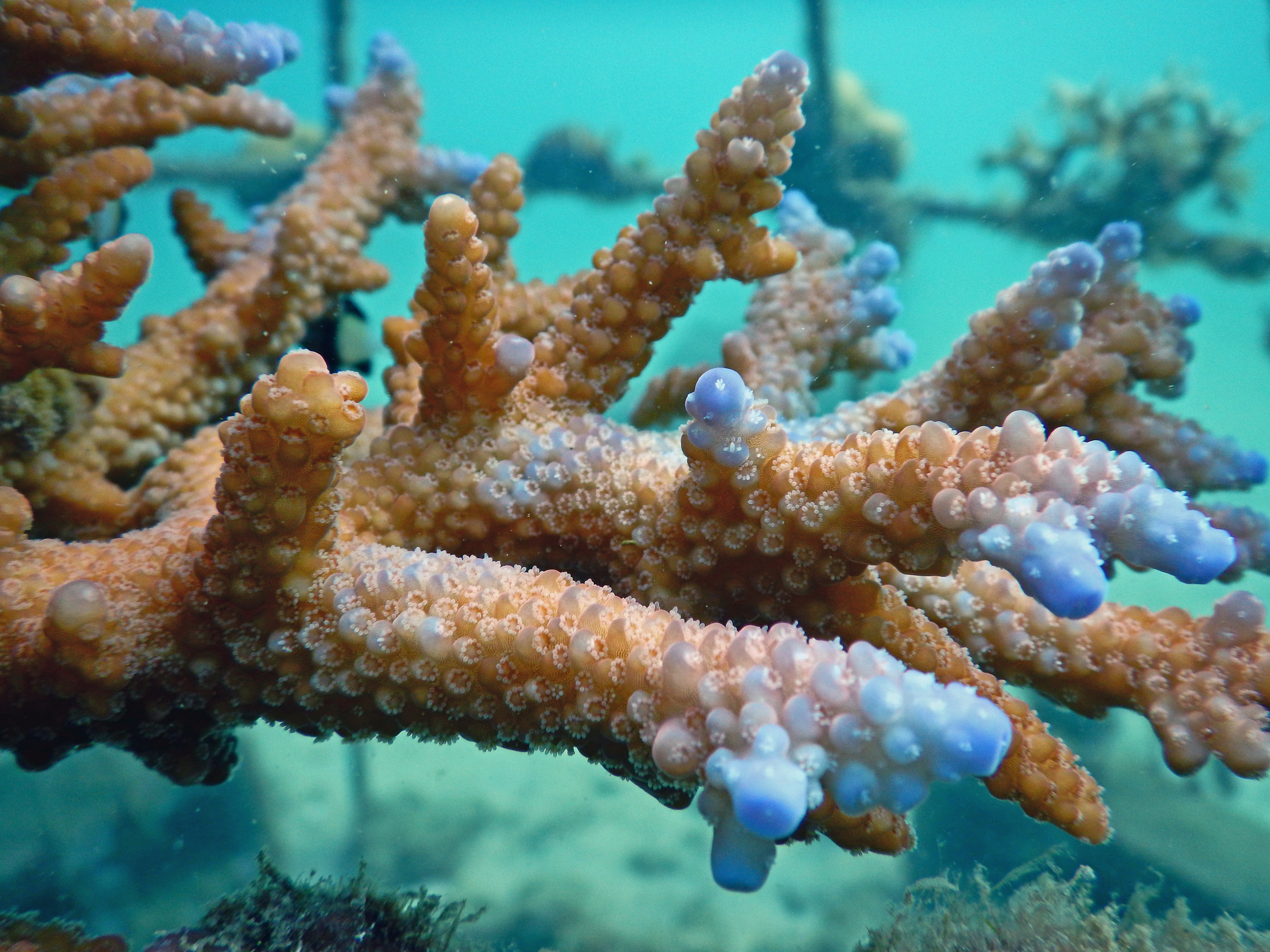
“Corals are animals but also ecosystems at the same time, like trees, they are individual organisms but together form a forest ecosystem and support a lot of life.” says Nayantara Jain, marine biologist and executive director at ReefWatch Marine Conservation - an Indian NGO in the Andaman islands working on marine conservation since 1993.

Coral reefs are home to about 25 percent of marine life and serve a variety of other functions, even to humans. These rainforests of the ocean are key to nutrient cycling in the water and even form a protective barrier against storms and waves at the shoreline. They ensure the availability of catch for fishermen and support scuba diving tourism world over. People often say that the diving experience often transforms their life.
The recent ocean conditions–both physical and chemical changes in the sea due to climate change and pollution, have led to the bleaching of corals, killing the organisms and leaving behind their inorganic white skeletons on our ocean floors. “Right now what is happening in our oceans with the rising temperatures and increased ocean acidification, reduces carbonate ions in the water, which is already a struggle for the corals.” adds Nayantara.

The mass bleaching event at the beloved Great Barrier Reef made headlines worldwide and The Outdoor Journal reached out to experts for comment. According to them, the corals are resilient enough to make it through these stressful times, but not in all their glory if the current trends continue.

The corals need saving and raising awareness is crucial but misinforming the public spells disaster. Back in 2016, TOJ rebutted Outside’s obituary on the Great Barrier Reef by talking to Dr. Rusty Brainard, Chief of the Coral Reef Ecosystem Program at NOAA Science Center. According to him, the Outside ‘obituary’ story was harmful in stating that the Great Barrier Reef was dead and condemned them for misreporting.
ALL IS NOT LOST
World over, marine sanctuaries are being promised protection by world governments and non-profits . Tour operators are making conservation efforts at the Great Barrier Reef, even during the pandemic.
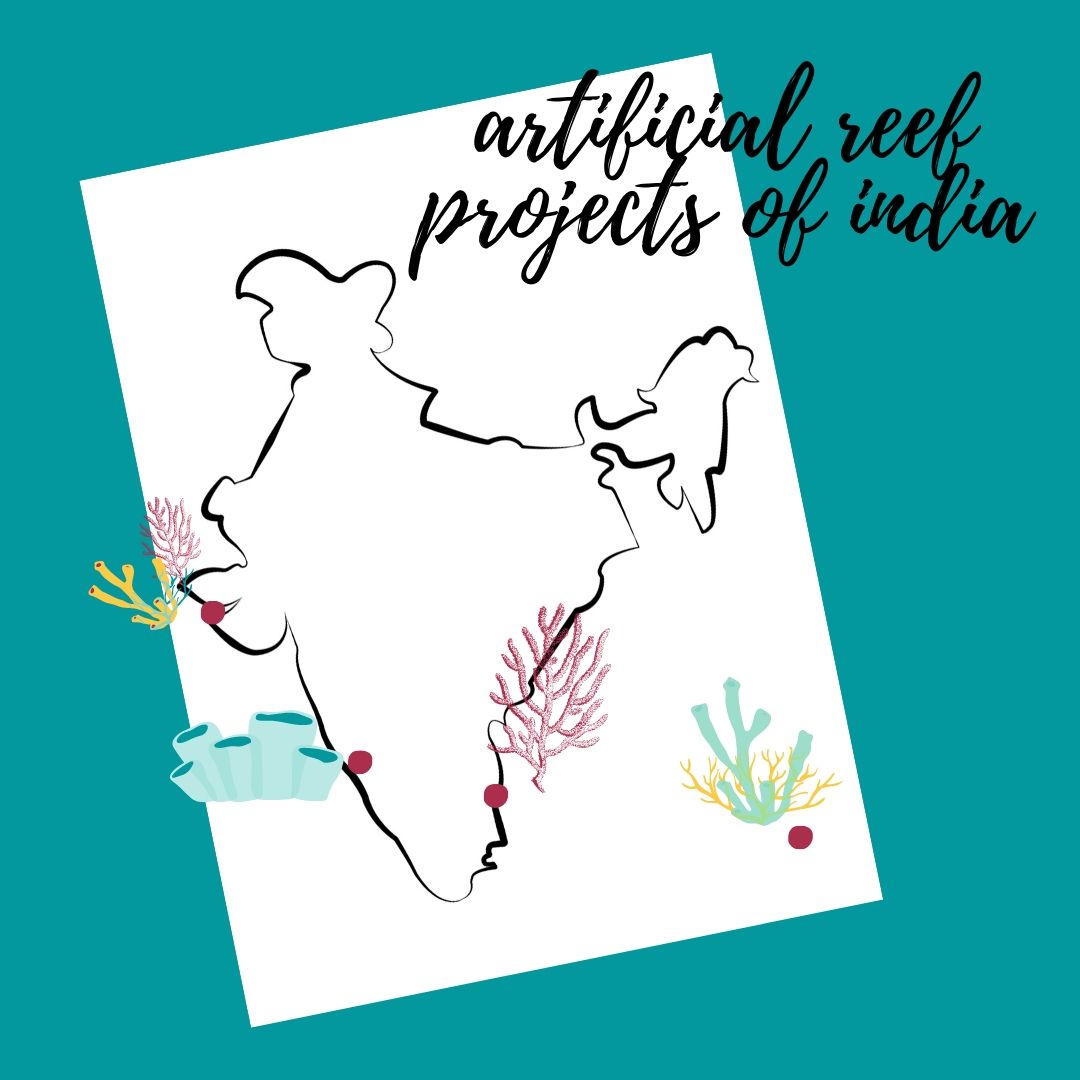
Regenerating corals is a relatively new method in the world of conservation and few Indian organisations are trying out different methods to restore our marine ecosystems. The Outdoor Journal reached out to a few scuba diving and conservation organisations in India to discuss their work on restoring coral reefs along various points of the county’s massive 7516.6 km coastline.

“Coral restoration is a fairly new technique being used for conservation. People around the world are exploring new techniques to get better at it.” explains Nayantara. Certain objects which were put into the ocean for transplanting coral pieces such as car tyres (as done in Florida) and alloy structures were found to be very polluting but using iron frames for this process has been a success.
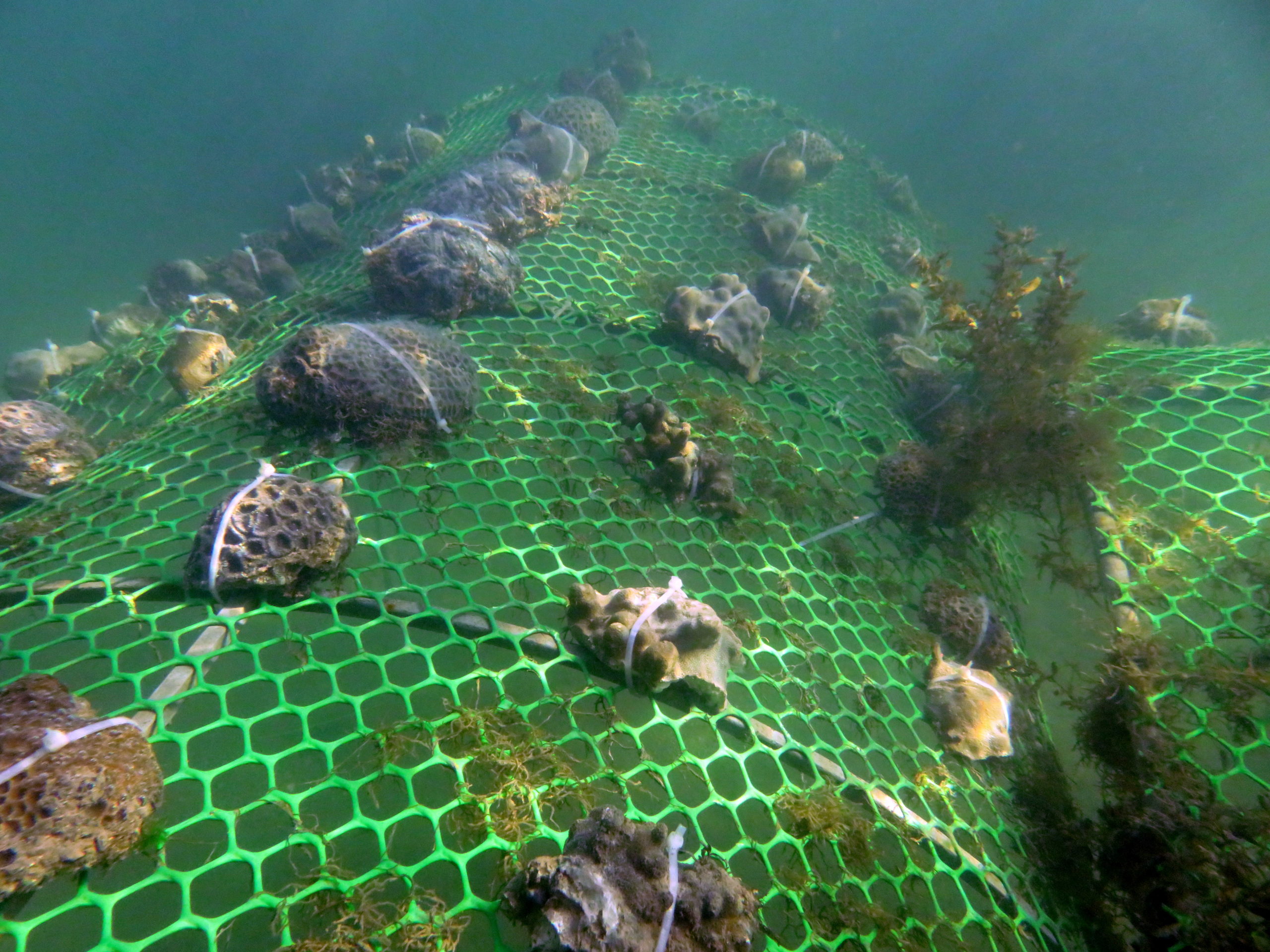
One of the methods being used worldwide is the micro-fragemention method which was discovered by accident by a scientist in Florida. It is a major breakthrough as it makes the corals grow 25-40% faster. Small pieces of coral are collected and allowed to grow in size in an aquarium or coral nursery and then transplanted onto a frame in the ocean.
Some Indian organisations have been doing exemplary work to restore the coral life along the subcontinent’s coastline. They discuss their methods, success rates and impact. The COVID-19 pandemic is yet another obstacle they have to overcome which has delayed some of their work.

THE ANDAMAN ISLANDS - Reefwatch Marine Conservation
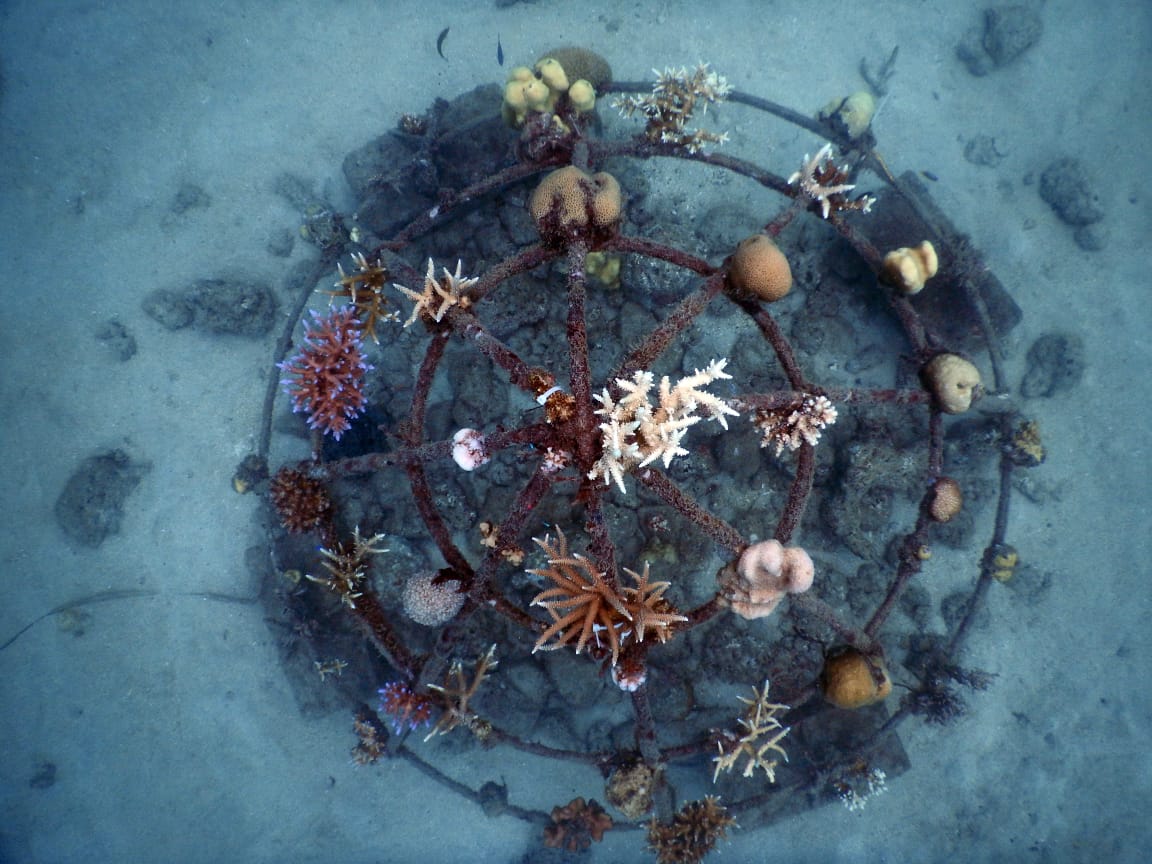
ReefWatch was established in 1993 and started coral restoration work in 2018 using the Mineral Accretion Technology in the Andamans, calling it the Re(ef) Generate program. Naturally broken coral fragments are collected–that would otherwise soon become smothered in sand and die and are re-attached to a metal frame nearby. A low voltage electric current is passed through this frame, using floating solar panels to improve the health and growth rates of corals. The electrolysis helps the reef grow 7-12 times faster than normal and leaves the coral with more of an energy budget to combat bleaching events, warmer temperature and disease.
During the interview, Nayantara Jain, Executive Director and marine biologist at Reefwatch says, “We were the first ever in India to start using this Mineral Accretion Method device and the only ones in the Andamans doing it.” They have extended a part of the natural reef at Chiditapu. “We keep the restoration site quite close to the reef site so as to not disturb the ecosystem.” she says.
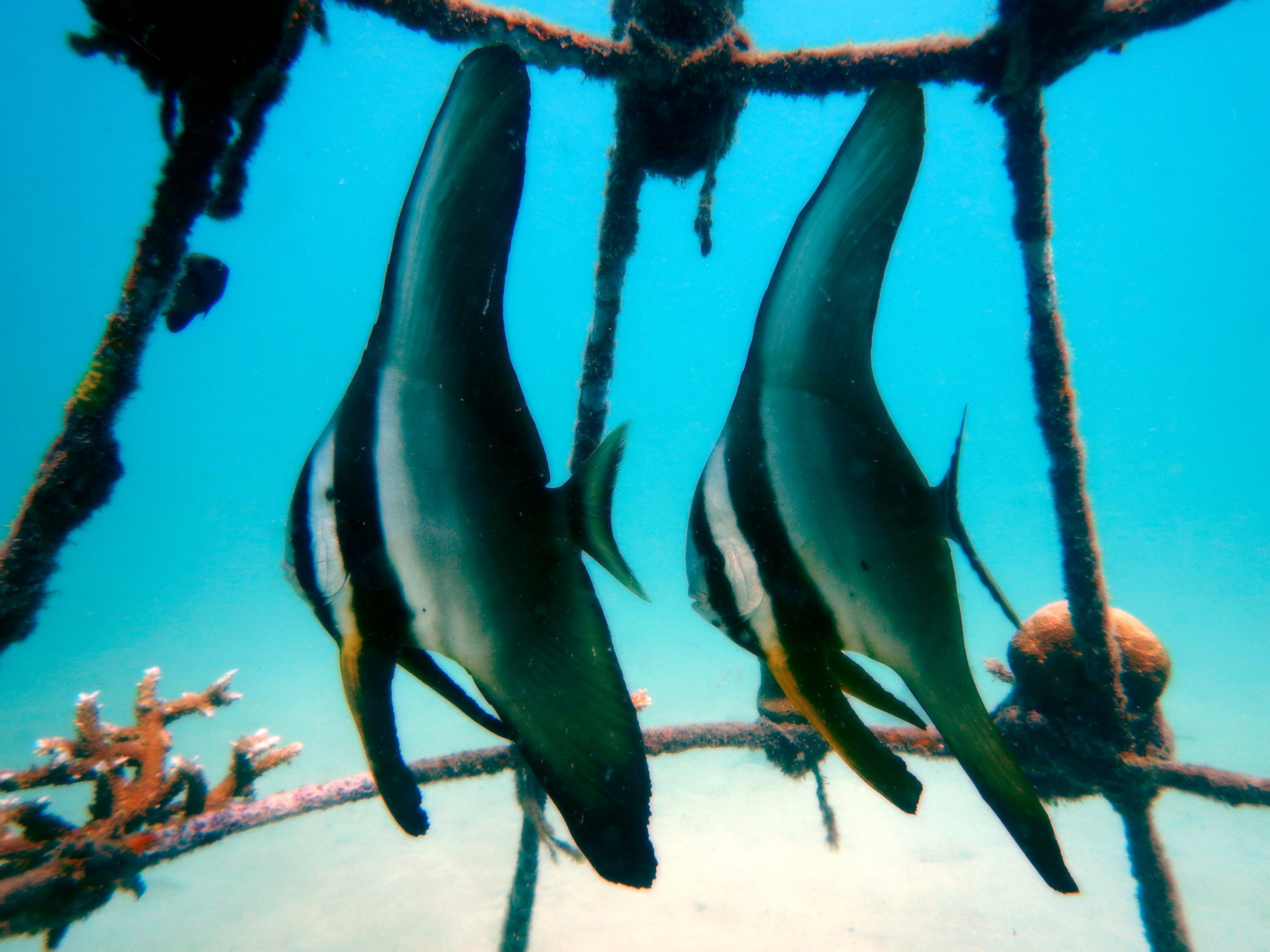
The restored structures have become home to many animals, especially juvenile fish. “We’ve seen that it works as a habitat. As we restore corals, our aim is to not only see coral growth but also to work out how we can make it closer to the natural ecosystem”. They are working on a manual, which lists their field lessons and experiences with the conditions and material available that will help new restoration projects in the country. In 2016, The Outdoor Journal covered the fundraising campaign by Reefwatch for their active restoration and rehabilitation projects in the Andamans.
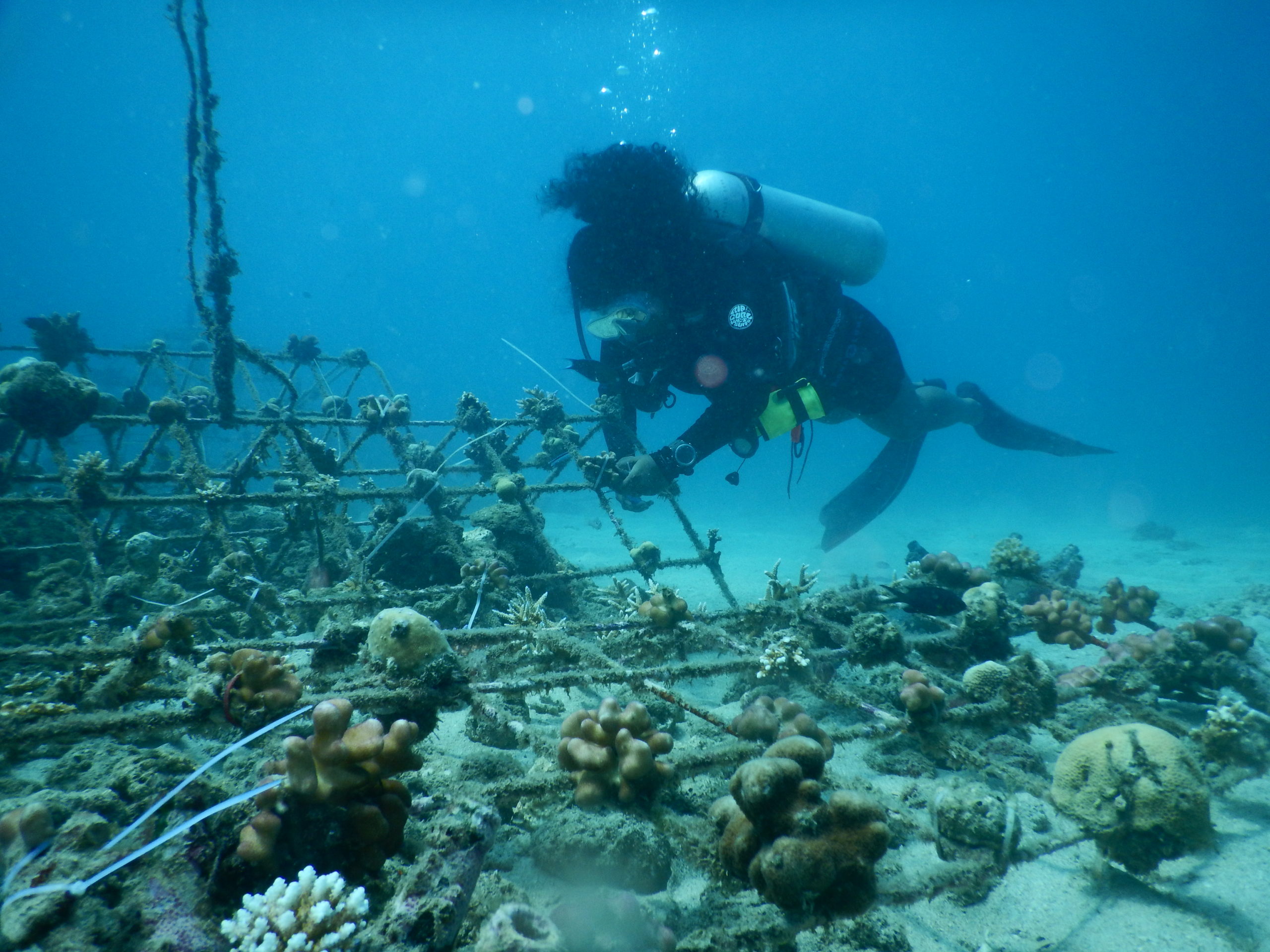
The fieldwork in the Andamans and Karnataka has taken a back seat due to the pandemic but at the same time they have been able to carry out major awareness building activities online. Nayantara mentions that their CSR funding may take a hit due to the impact of the pandemic on the economy in the long run but the NGO has launched the Reef Guardian Program where one can adopt a patch of the restored reef. “The idea is to help us do this (reef restoration) and also creates a personal connection between people that live in the city and these reefs. It becomes a personal connection to that ecosystem”. (Note: they accept donations only from Indian bank account holders).
GUJARAT - Mithapur Coral Recovery Program
Launched in 2008, the Coral Reef Recovery Project is a joint venture of Wildlife Trust of India and the Gujarat Forest Department, supported by Tata Chemicals Limited (TCL). It is the first of time in India where a part of a marine area is managed actively by a community. It seeks to develop and implement appropriate strategies for the conservation of the Mithapur Reef, situated 12 kilometres south of the Gulf of Kachchh in Gujarat.
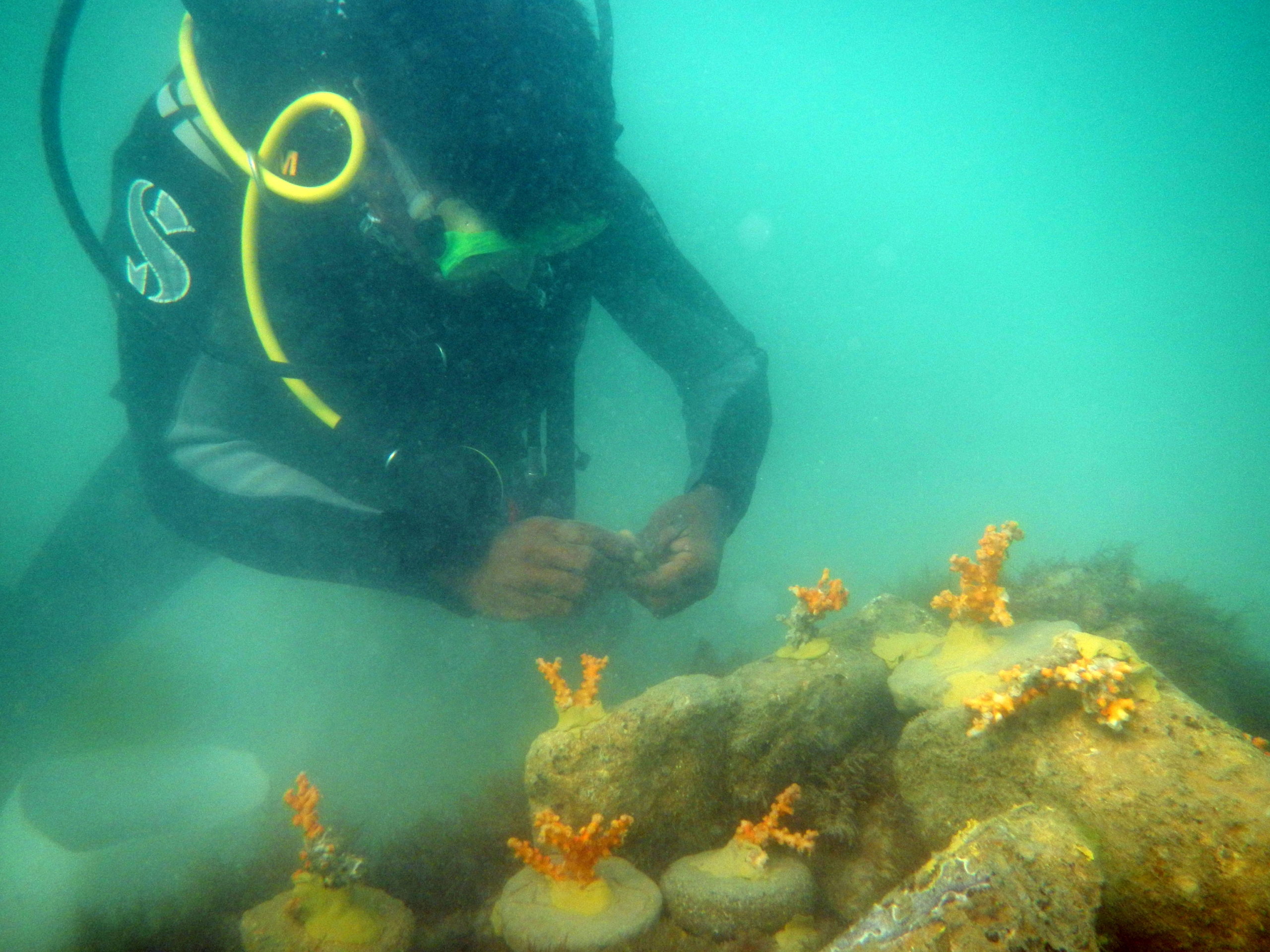
Locally available species of boulder corals are transplanted, where they conduct regular coral walks with members of the fishing community to search for any up-turned and/or disoriented corals that are partially damaged. They are initially placed at the nurseries (they currently have 57 nursery sites/tables) and translocated to coral gardens after making sure they have shown signs of growth and are established.
While nursery sites are made with iron tables, coral gardens are composed of locally quarried limestone boulders which are placed in a conical manner. So far 960 artificial reef modules, amounting to 2438.4 sq m of surface area that is spread over 30,000 sq m spatial area have been created. A cluster of these artificial reefs are selected to convert them into coral gardens by populating them with previously rescued corals. So far 1040 boulders of corals have been rescued and transplanted with a survival rate of 96.5%. Two of the coral gardens have been demarcated as 'no-take zones' for fishing where fishermen are not supposed to venture out for fishing.

“The success of these efforts have been seen in terms of increased fish density and diversity. Not only have uncommon fish been recorded, but the fish catch in the area has increased by five times over the past four years. Coral cover on the reef increased from 12 to 16 % over the years. Luckily, their field-level activities have not been affected yet due to the ongoing covid19 pandemic” says Mr B.M.Praveen Kumar, Asst. Manager & OIC, Marine Conservation Project, Wildlife Trust of India.

GOA - Coastal Impact
Coastal Impact is an NGO based out of Goa, engaged in marine conservation and education. Mr Venkatesh Charloo, banker turned scuba diver, joined Barracuda Diving India, Goa in 1996 and later founded Coastal Impact out of his passion for marine life.
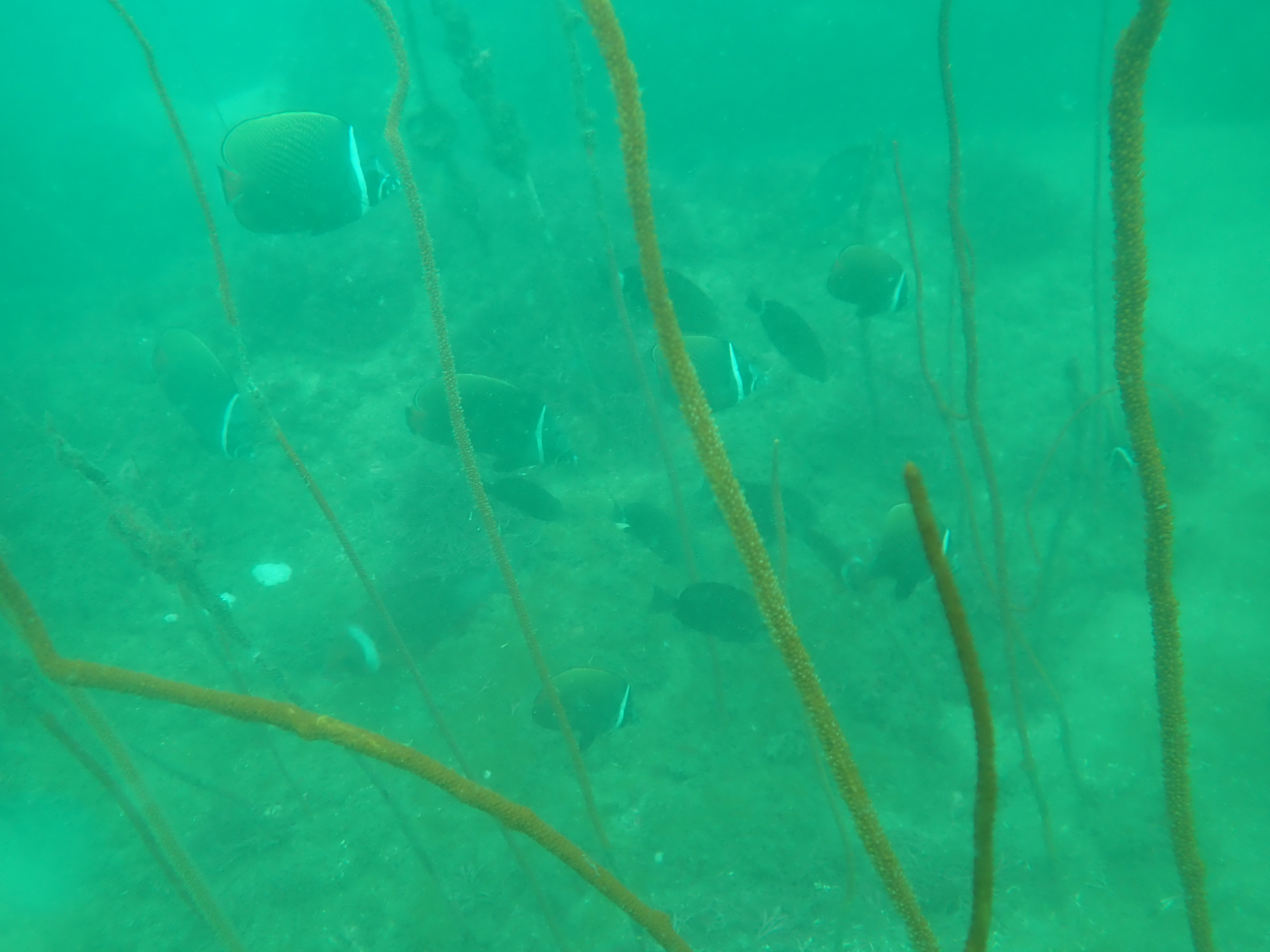
He tells The Outdoor Journal, “Coral Restoration is being done in India but it was not being done in Goa before, so we wanted to start it here.” On asking about the water visibility, he says that even though the visibility of the Goan waters is not crystal clear, the rich marine life found there is worth the dive.
Their coral restoration project 2020 is funded by The Habitat Trust (under HCL). Preliminary work and surveys were done in January 2020 and the coral were transplanted in May of 2020. The team has created two coral beds (with 48 coral pieces each) using the Micro Fragmentation method. This non-invasive technique uses the natural phenomenon of reef regeneration from small coral fragments. Mr. Charloo hopes to replicate and standardise this method in Goa, so that it can be scaled up for larger scale transplantation in the state.
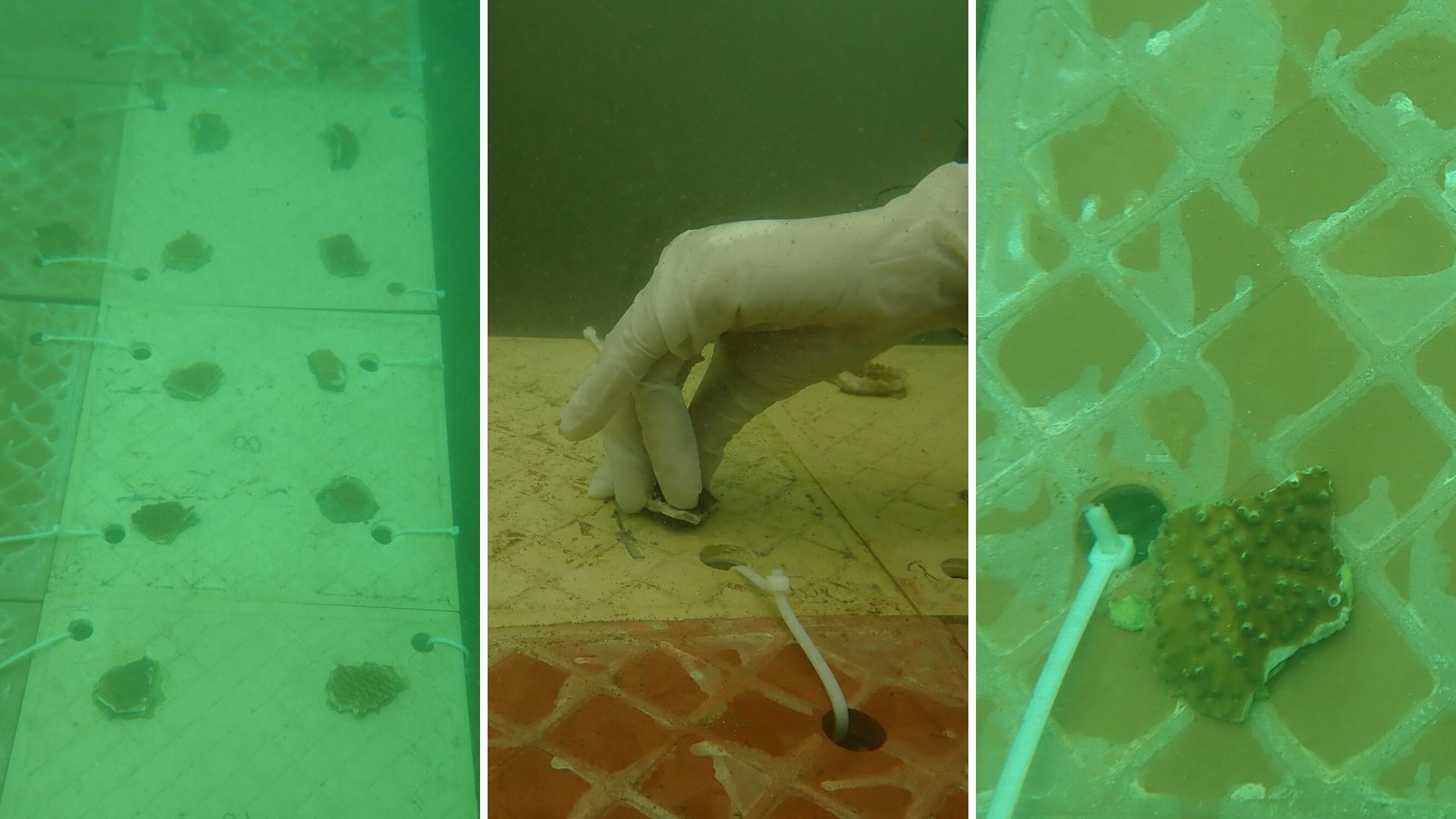
They weren't able to monitor the coral beds as the seas became too rough, so now they'll wait till October 2020 to see if the transplanted corals survived. “We will learn from that and again plant more beds in different places.” he says.
Due to the pandemic, their diving centre is closed but Mr. Charloo has been taking online courses on marine conservation with Scuba Schools International. “We are getting all the e-manuals issued out to our students which they can complete at home and get certified for that.” he says. He has also been hosting seminars and talks for students. Volunteers with the Coastal Impact are helping prepare a database of research papers and another one for eco-friendly products available in India for people to easily access.

PONDICHERRY- Temple Adventures
The traditional coastline of Pondicherry is sandy bottomed that slope to 30m and is overall barren, with a few exceptions. Mr. Donarun Das, Director at Temple Adventures, Pondicherry, shares the story behind the making of the artificial Temple Reef.
“The fishermen of Pondicherry have been building fish aggregation devices by dropping rocks and random stuff which become grounds for fish to spawn. When we started diving in 2010 and saw this trait of fishermen, we thought of doing it in a more structured manner.” explains Das.

Temple Adventures started work in one of their rented harbour lands, they began work at 18m deep, using approximately 10 tonnes of recycled concrete bricks, shells of cars, trucks and metal bars. Over time, the algae grew over these structures and provided a shelter to the planktivores (aquatic organisms feeding on plankton) which further attracted the larger predator fish, creating an entire ecosystem of sorts around the artificial reef. These sites have been christened ‘Temple Reef’ and ‘The Wall’ and have recorded an increase in the marine life sighted over the years. Silver moonies and rabbit fish commonly swim around these sites. Das recounts going diving for the first time in 3 months of lockdown in India and the undisturbed sites seemed to be beaming with fish.
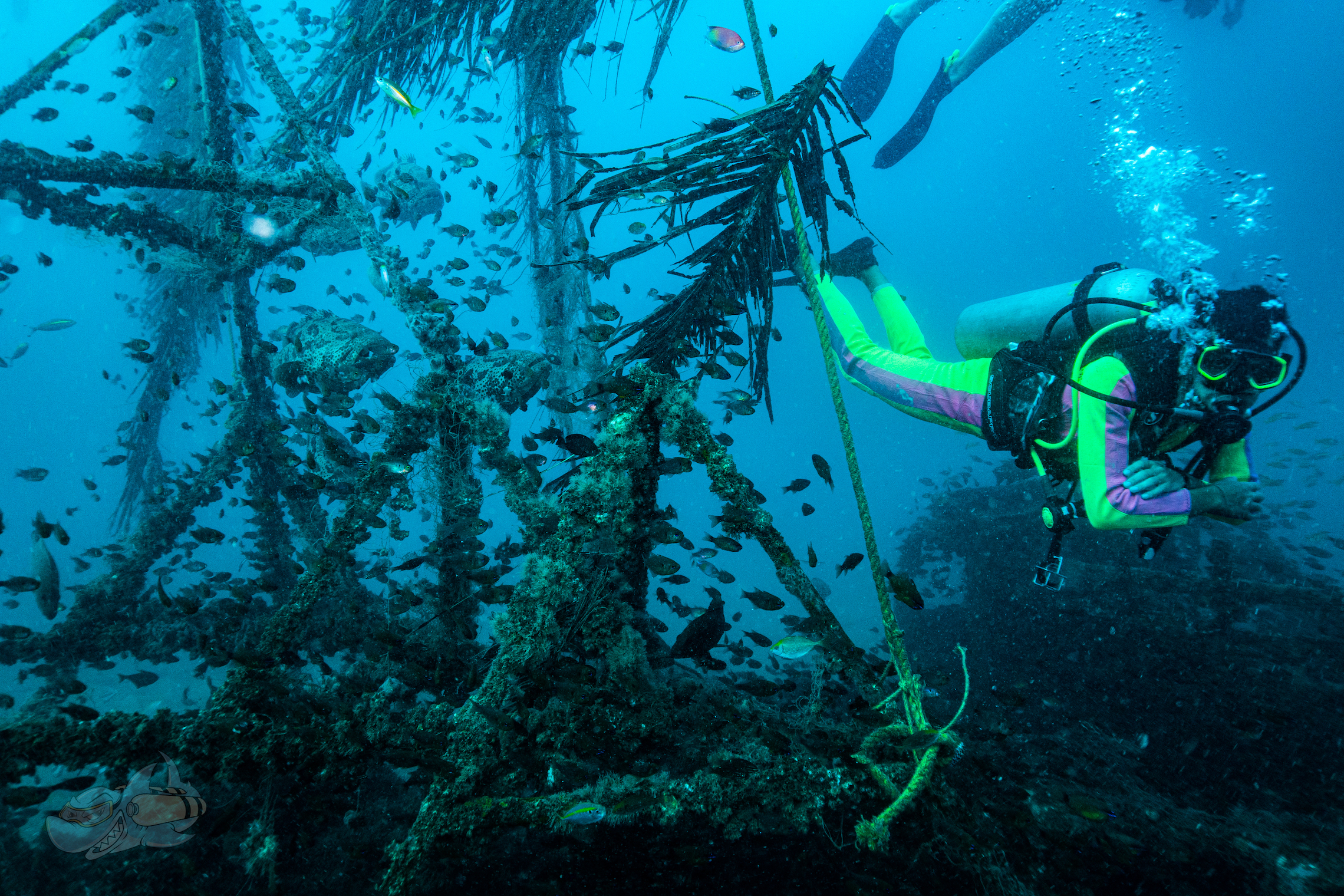
They have been battling with marine pollution, especially free floating fishing nets which entangle and injure aquatic life. Temple Adventures actively conducts online seminars and presentations on marine conservation.

Temple Adventure has resumed scuba diving for the public with all the safety precautions against COVID-19, following the latest safety guidelines.
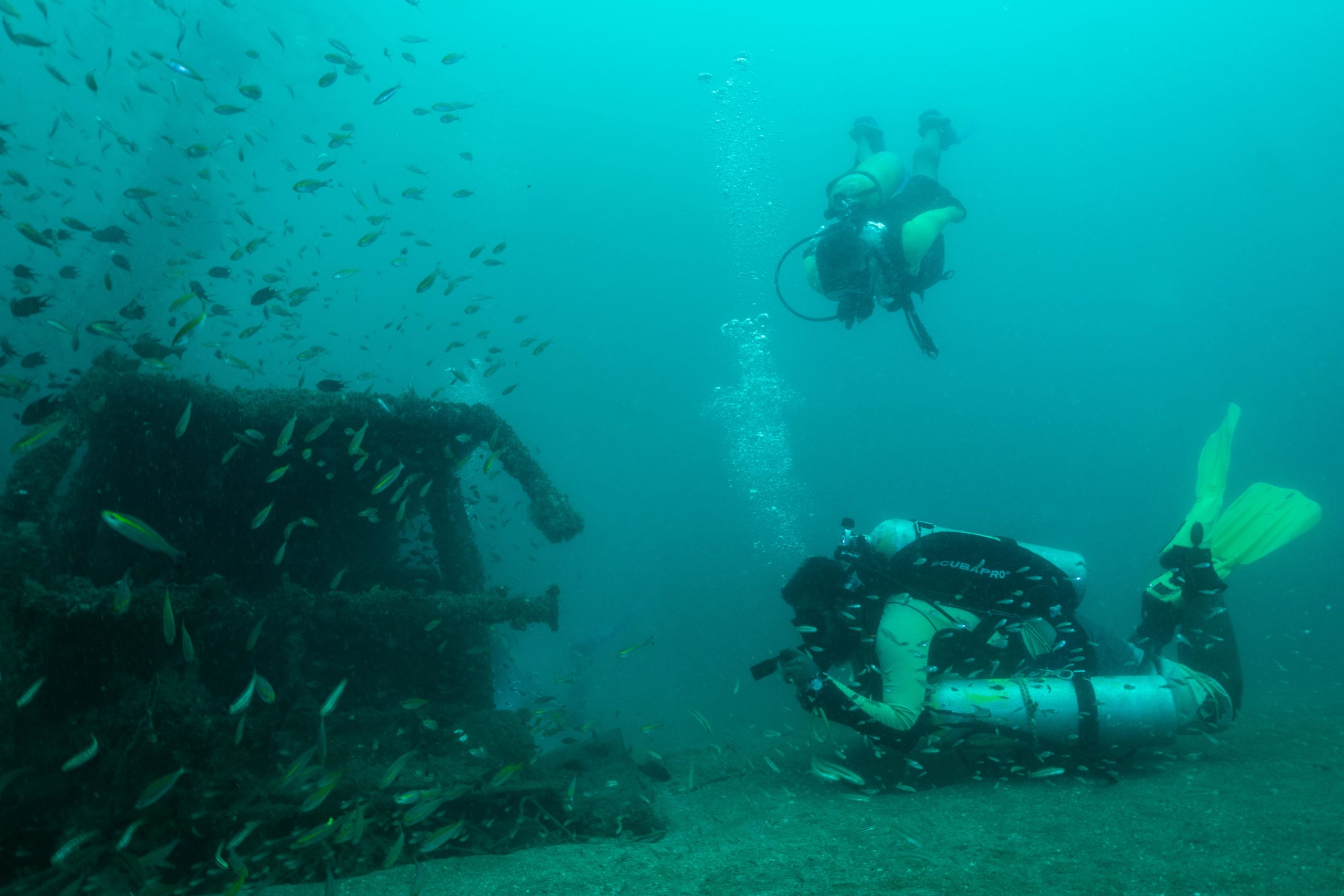
It is important to protect and preserve these precious marine organisms which support and shelter so many beings. This is an effort to create awareness and highlight the efforts made by organisations working to protect the marine ecosystems in India, who hope to expand their conservation techniques in the future. Because as Baba Dioum rightly said, "In the end, we will conserve only what we love; we will love only what we understand and we will understand only what we are taught."
Cover photo: Aerial view of Reefwatch's Coral Restoration Site in the Andaman Islands. Photo credit Reefwatch Marine Conservation





Comments ()